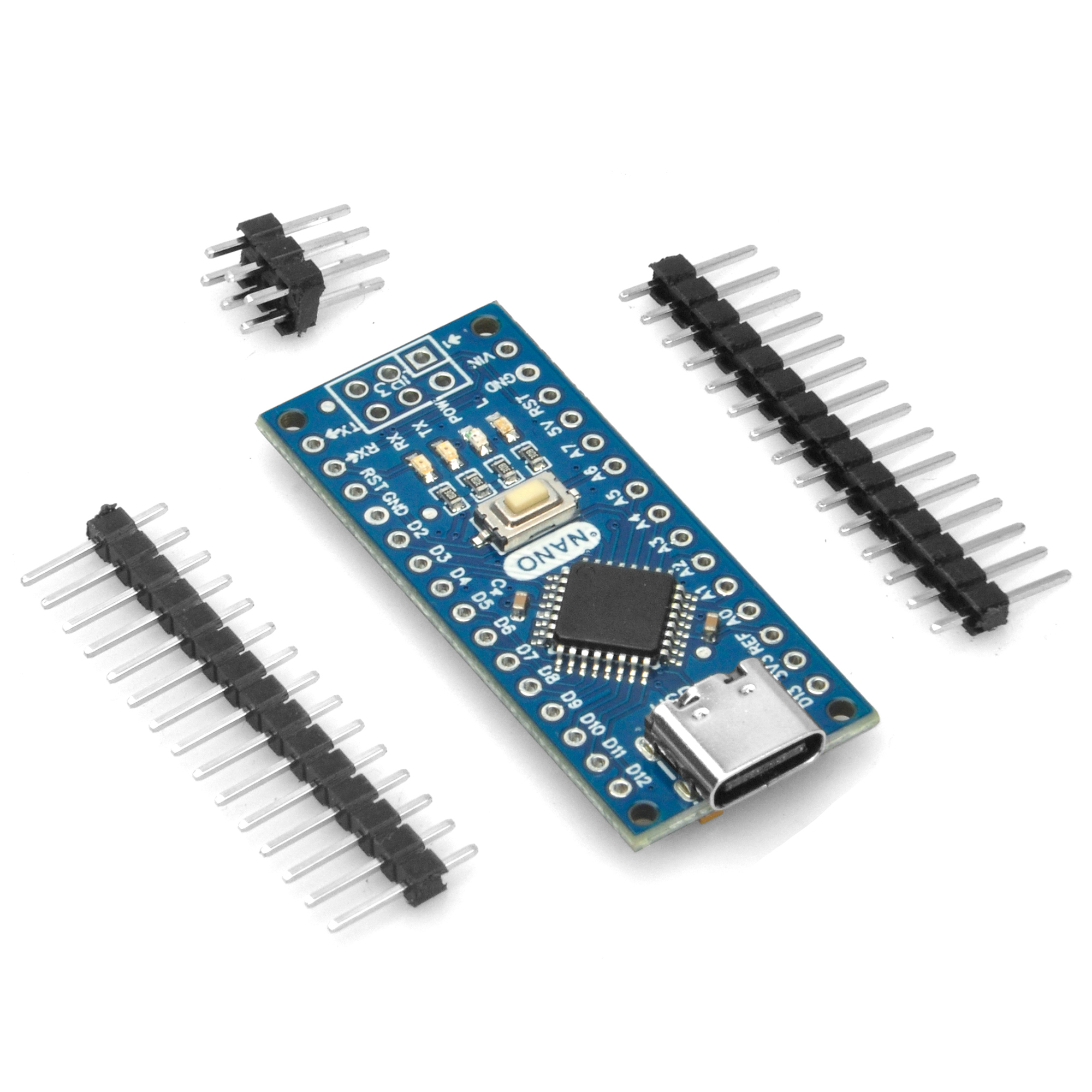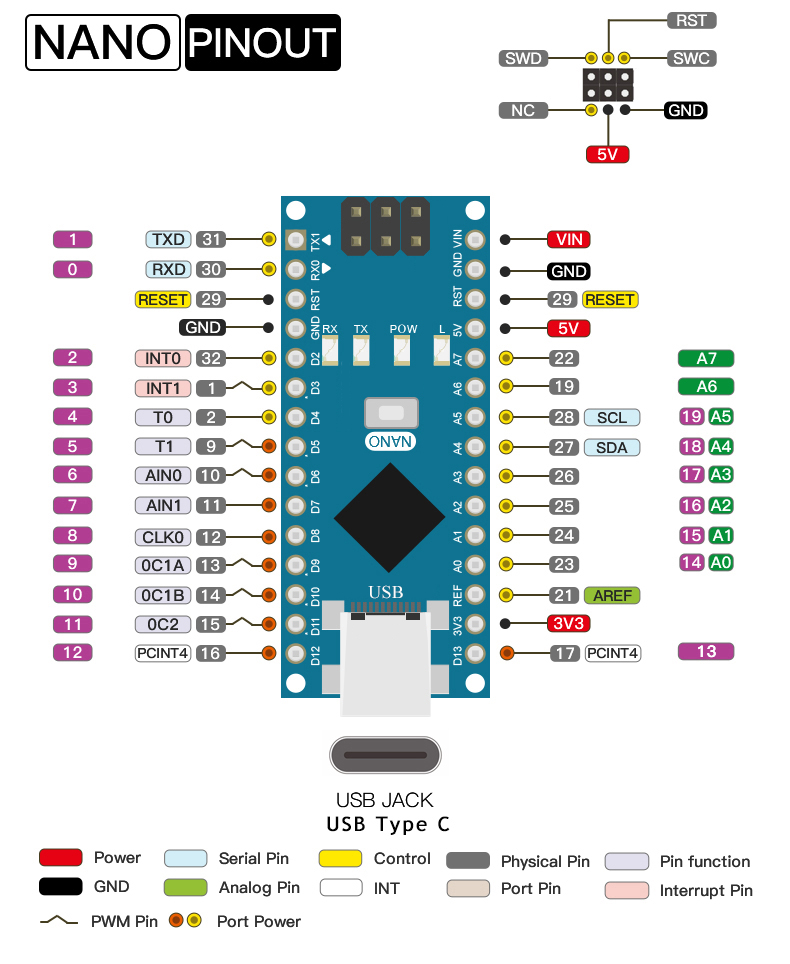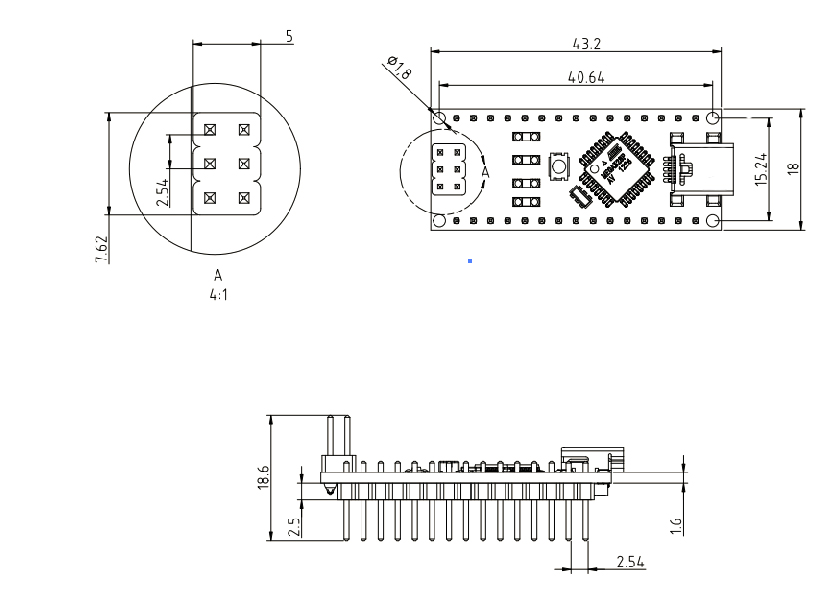
| Buy from US |
Buy from UK |
Buy from DE |
Buy from IT |
Buy from FR |
Buy from ES |
ここでご購入を! |
 |
 |
 |
 |
 |
 |
 |




Overview
To make innovation easier, we offer various modules and development platforms to accelerate the development process and to reduce barriers to entry and to soften those steep learning curves. A vast number of exciting and innovative products are designed, sourced and manufactured around us every day.
With the popularity of open-source hardware, Arduino boards are being recognized by more and more users and you can find them in a variety of innovative and creative applications. As it is priced about 20USD, users with insufficient capital budgets will regard its price as too high, which also limits its applications in a large scale of products.
As we can see, actually the main control chip influences the cost most. After selection and comparison, we picked out an inexpensive main control chip of strong compatibility with ATmega328 for development, and we programmed Arduino-compatible bootloader and modified IDE configuration for it, so that it can be almost 100% compatible with the present Arduino IDE and various libraries.
We do not simply offer these cheap boards by cloning Arduino board with mass production, but we replace the main control and develop relevant contents to make it compatible with Arduino. Then we can further reduce the cost through batch purchase and processing, and provide you with the lowest cost full-size Arduino compatible board in the world.
Introduction

OSOYOO LGT-NANO is based on the chip LGT8F328P-QFP32 instead of Atmega328P and redesigned to produce a compatibility board that can be compatible with Arduino NANO. You can use for Arduino IDE
(Recommend Legacy IDE 1.8.x) to develop (you need your own installation support). The development environment is recommended, and the LGT support package can be installed directly in the development board manager.
Main features:
- LGT8F328P Microcontroller
- OSOYOO LGT-NANO is compatible with Arduino Nano V3.0,for Arduino IDE.
- Support DIY Mode which could offer wonderful experience when using.
- Owned Inventory the GUID (Unique own ID)Can Be For on used chip solutions Encryption Program.
- High-performance low-power 8-bit processor
- The internal crystal oscillator allows easier use for everyone.The maximum main frequency is 32M.
- 12-bit ADC (analog to digital conversion)
- Built-in DAC
- 32 kB of which 1K for boot, 2k for emulated errom
- 2 kB internal SRAM
- 1 kB EEPROM
- 32 x 8 General Purpose Working Registers
- Six PWM Channels
- Programmable Serial USART
- Master/Slave SPI Serial Interface
- Type-C USB connection
- 6-12V unregulated external power supply (pin 30)
- 5V regulated external power supply (pin 27)
- Increase the USB fuse to protect the computer port from damage.
Tech Specs
Here you will find the technical specifications for the OSOYOO LGT-NANO.
| Name |
OSOYOO LGT-Nano |
| LGT8F328P-QFP32 |
| Type-C USB |
| Built-in LED Pin |
D13 |
| Digital I/O Pins |
14 |
| Analog input pins |
8 |
| PWM pins |
9 |
| UART |
RX/TX |
| I2C |
A4 (SDA), A5 (SCL) |
| SWD |
HAVE |
| SPI |
D11 (COPI), D12 (CIPO), D13 (SCK).
Use any GPIO for Chip Select (CS). |
| I/O Voltage |
5V |
| Input voltage (nominal) |
7-12V |
| DC Current per I/O Pin |
30mA (6 of them support 80mA high current) |
| Processor |
INTERNAL 16MHZ (MAXIMUM 32MHZ) |
| ATmega328P |
2KB SRAM, 32K(1K for boot, 2k for emulated errom)
1KB EEPROM |
| Weight |
5g |
| Width |
18 mm |
| Length |
45 mm |
| Pin Pitch |
2.54 mm |
Recommended Operating Conditions:
Conservative thermal limits for the whole board: -40 °C 85 °C
OSOYOO LGT-NANO Pinout

Dimension

Application Examples
As an Arduino NANO compatible board, the OSOYOO LGT-NANO are exactly the same size and pinouts, designed for mini projects from the maker community. With a large number of input/output pins gives the advantage of utilizing several serial communications like UART, SPI and I2C. The hardware is compatible with Arduino IDE.
Security: The high-performance and low-power capabilities gives the chance to develop security based
applications like access control systems using fingerprint sensors. Unique own ID further enhances product security. The flexibility to interface sensors and external devices using serial communication has improved the scope of utility.
Environmental: The low-power feature of the microcontroller and the power supply options for the board has enhanced the ability to implement remote IoT projects related to environmental issues.
Robotics: Robotics has always been the favorite area of exploration for the Maker community and with this tiny embedded hardware you can now create complex and advanced robotic applications.
Compare with the Arduino Nano
| Main Chip |
LGT8F328P-QFN32 |
ATMEGA328P-PU |
| Serial chip |
Ch340G |
FT232RL |
| USB interface |
Type C |
Mini USB |
| Input voltage |
6~12V |
6~12V |
| **Operating voltage (output current)** |
5V(1000mA) |
5V(500mA) |
| 3.3V Maximum output current |
500mA |
150mA |
| Main frequency |
INTERNAL 16MHZ (MAXIMUM 32MHZ) |
External crystal oscillator 16M |
| Flash |
32K(1K for boot, 2k for emulated errom) |
32K(Boot accounts for 0.5k) |
| SRAM |
2K |
2K |
| ERROM |
1k |
1K |
| Number of digital IOs |
14 |
14 |
| PWM |
6 |
6 |
| ADC |
8 Channel 12Bit |
6Channel 10Bit |
| Reference Voltage and Accuracy |
1.024V/2.048V/4.096V ±1% |
1.1V ±0.2% |
| DAC |
8 channels 12Bit |
/ |
| I/O DC output capability |
30mA (6 of them support 80mA high current) |
20mA |
| bootloader Burning |
SWD |
SPI |
| Size |
45 x 18mm 7g |
45 x 18mm 7g |
FAQs
What is the LGT8F328P ?
The LGT8F328P is a chip compatible with AVR instruction set and Atmega328P. After loading the Arduino software support package, you can use the Arduino IDE to program. The usage method and 99.9% of the application scenarios can replace the Atmega328P chip.
LGT8F328P Parameter:
1. The LGT8F328P enhances 8-bit RISC core, supports 16-bit digital operation expansion, and can run at a core frequency of up to 32MHz within the working range of 1.8V-5.5V;
2. The LGT8F328P internal 32K bytes of FLASH program memory, 2K bytes of data SRAM, built-in control logic that simulates FLASH as EEPROM, part of the program FLASH can be divided into data FLASH space according to application needs, and EEPROM-like interface access is realized through the EEPROM controller ;
3. The LGT8F328P integrates a wealth of analog peripherals, including 12-bit ADC, programmable gain differential amplifier, high-precision 1.024/2.048/4.096V internal reference voltage, 8-bit DAC and high-speed analog comparator; at the same time LGT8F328P also integrates commonly used digital Interface controller, supports multi-channel complementary PWM output and dead zone control;
4. The LGT8F328P architecture design is relatively new, and its peripheral functions are far stronger than that of the Atmega328P. In particular, the program encryption capability far exceeds Atmega328P.
Why use LGT8F328P instead of Atmega328P?
As we all know, the shortage of chips will also have a great impact on the maker industry. The price of Atmega328P chips has already doubled and the supply is unstable. The market is full of refurbished, copycats, and even typing (printed on the same package) chips, which seriously interferes with the normal production and use of Maker’s products. I came into contact with the LGT8F328P chip by chance. At first, I thought it was a fake chip. After rigorous testing and direct communication with the chip manufacturer, I found that it was an AVR instruction set chip, not a fake chip. Similar to GD to STM32. It is a brand-new chip, but it is compatible to replace Atmega328P. After testing and optimization by the Nulllab technical team for more than half a year, our Arduino IDE software support package is 99.9% compatible with Atmega328P. In this way, makers can buy cost-effective and reliable arduino products. The Nulllab technical team provides long-term technical support and chip supply for this, so makers can use it with confidence.
Power
The OSOYOO LGT-Nano can be powered via the Type-C USB connection, 6-12V unregulated external power supply (pin 30), or 5V regulated external power supply (pin 27). The power source is automatically selected to the highest voltage source.
Memory
The LGT8F328P has 32K FLSH(1K for boot, 2k for emulated errom). The LGT8F328P has 2 KB of SRAM and 1 KB of EEPROM.
Input and Output
Each of the 14 digital pins on the Nano can be used as an input or output, using pinMode(), digitalWrite(), and digitalRead() functions. They operate at 5 volts. Each pin can provide or receive a maximum of 40 mA and has an internal pull-up resistor (disconnected by default) of 20-50 kOhms. In addition, some pins have specialized functions:
- Serial: D0 (RX) and D1 (TX). Used to receive (RX) and transmit (TX) TTL serial data. These pins are connected to the corresponding pins of the CH340G USB-to-TTL Serial chip.
- External Interrupts: 2 and 3. These pins can be configured to trigger an interrupt on a low value, a rising or falling edge, or a change in value. See the attachInterrupt() function for details.
- PWM: 3, 5, 6, 9, 10, and 11. Provide 8-bit PWM output with the analogWrite() function.
- SPI: D10 (SS), D11 (MOSI), D12 (MISO), D13 (SCK). These pins support SPI communication, which, although provided by the underlying hardware, is not currently included in the Arduino language.
- LED: D13. There is a built-in LED connected to digital pin 13. When the pin is HIGH value, the LED is on, when the pin is LOW, it’s off.
The Nano has 8 analog inputs, each of which provide 10 bits of resolution (i.e. 1024 different values). By default they measure from ground to 5 volts, though is it possible to change the upper end of their range using the analogReference() function. Analog pins 6 and 7 cannot be used as digital pins. Additionally, some pins have specialized functionality:
- I2C: A4 (SDA) and A5 (SCL). Support I2C (TWI) communication using the Wire library (documentation on the Wiring website).
There are a couple of other pins on the board:
- AREF. Reference voltage for the analog inputs. Used with analogReference().
- Reset. Bring this line LOW to reset the microcontroller. Typically used to add a reset button to shields which block the one on the board.
Communication
The LGT-Nano has a number of facilities for communicating with a computer, another Arduino, or other microcontrollers. The lgt8f328p provide UART TTL (5V) serial communication, which is available on digital pins 0 (RX) and 1 (TX). An CH340G on the board channels this serial communication over USB and the CH340 drivers (included with the Arduino software) provide a virtual com port to software on the computer. The Arduino software includes a serial monitor which allows simple textual data to be sent to and from the Arduino board. The RX and TX LEDs on the board will flash when data is being transmitted via the CH340G chip and USB connection to the computer (but not for serial communication on pins 0 and 1). A SoftwareSerial library allows for serial communication on any of the Nano’s digital pins. The lgt8f328p also support I2C (TWI) and SPI communication. The Arduino software includes a Wire library to simplify use of the I2C bus. To use the SPI communication, please see ATmega328 datasheet.
Programming
The OSOYOO LGT-Nano can be programmed with the Arduino software (download). Select “OSOYOO LGT-Nano ” from the Tools > Board menu (according to the microcontroller on your board). The lgt8f328p on the LGT-Nano comes preburned with a bootloader that allows you to upload new code to it without the use of an external hardware programmer. It communicates using the original STK500 protocol. You can also bypass the bootloader and program the microcontroller through the ICSP (In-Circuit Serial Programming) header using Arduino ISP or similar.
Automatic (Software) Reset
Rather then requiring a physical press of the reset button before an upload, the LGT-Nano is designed in a way that allows it to be reset by software running on a connected computer. One of the hardware flow control lines (DTR) of the CH340G is connected to the reset line of the lgt8f328p via a 100 nanofarad capacitor. When this line is asserted (taken low), the reset line drops long enough to reset the chip. The Arduino software uses this capability to allow you to upload code by simply pressing the upload button in the Arduino environment. This means that the bootloader can have a shorter timeout, as the lowering of DTR can be well-coordinated with the start of the upload. This setup has other implications. When the Nano is connected to either a computer running Mac OS X or Linux, it resets each time a connection is made to it from software (via USB). For the following half-second or so, the bootloader is running on the Nano. While it is programmed to ignore malformed data (i.e. anything besides an upload of new code), it will intercept the first few bytes of data sent to the board after a connection is opened. If a sketch running on the board receives one-time configuration or other data when it first starts, make sure that the software with which it communicates waits a second after opening the connection and before sending this data.
What’s this GUID then?
Each LGT8F328P has a unique GUID (serial number) built in. Useful for encrypting things.
To retrieve the number (it’s read-only) do this in your sketch setup():
uint32_t guid = (uint32_t)&GUID0;
To display that number in its intended HEX format do this:
Serial.println(guid, HEX);
Simples, right?
Buy LGT8F328P-LQFP32 MiniEVB Alternative Arduino Nano V3.0 ATMEGA328P at pakistan’s Best Online Shopping store in cheap price.Here you get best LGT8F328P-LQFP32 MiniEVB which replace Replace ATMega328P. We Deliver in Gujranwala, Karachi, Lahore, Islamabad, Rawalpindi, Multan, Quetta , Faisalabad and all over Pakistan.
Reference
Schematic Digram
Datasheet of LGT8FX8P
Datasheet (English) LGT8FX8P_databook_V1.05 By Watterrott
To explore more information about LGT8F328P, please click here, thanks to dbuezas for organizing and contributing
















